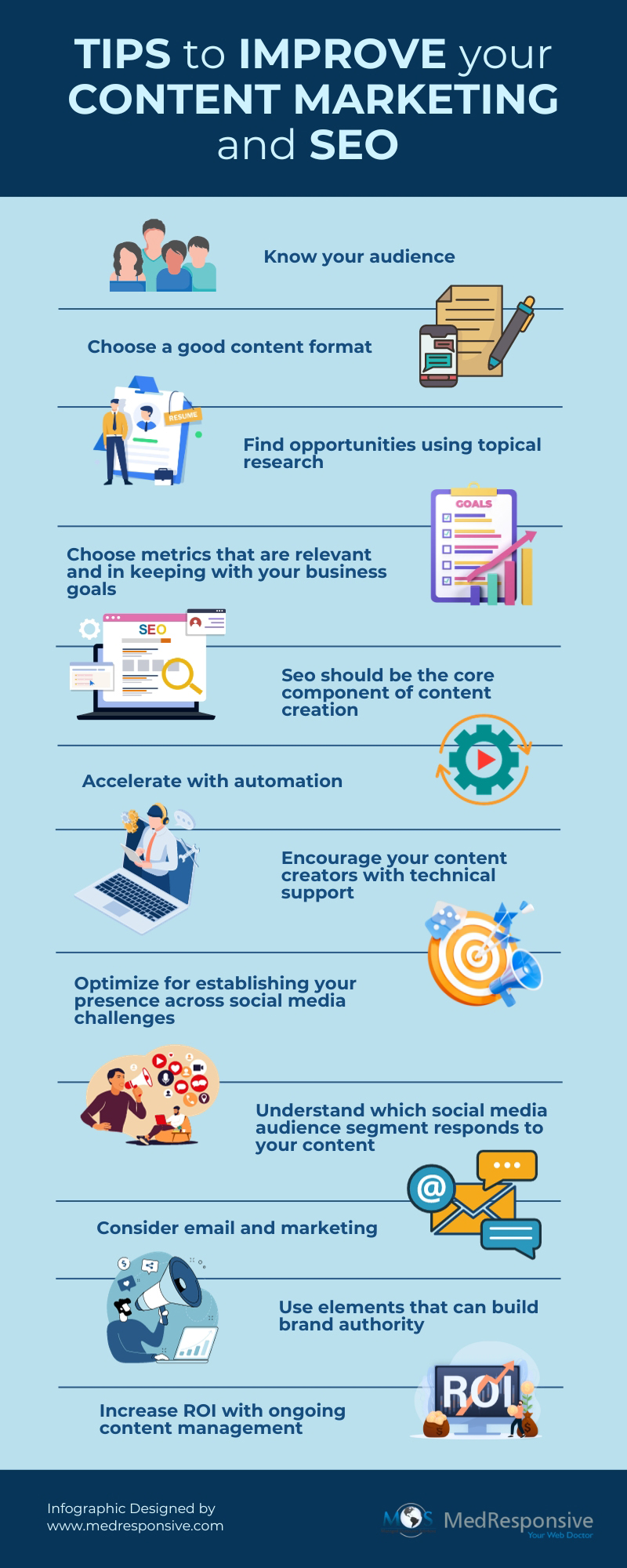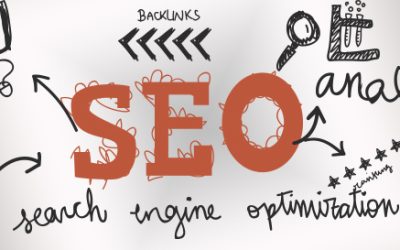Content marketing is a powerful way to gain visibility, build trust and drive traffic to your website. It is one of the most effective forms of digital marketing because that helps you attract new visitors, increase customer loyalty and boost sales. Content marketing gives you an opportunity to showcase your expertise in your industry and make people aware of the value you can provide them. A company providing professional content creation services in USA will use its expertise and experience to help you create content that will attract visitors who are interested in your products or services. Experts also keep track of the latest trends in content marketing to deliver quality solutions.
Content marketing helps build relationships with potential customers by providing them with valuable information on matters of interest to them. With the increasing integration of artificial intelligence in content generation, content writing service providers act as facilitators, leveraging sophisticated algorithms and natural language processing to produce high-quality, engaging content. The synergy between these services and AI content writing not only enhances efficiency but also ensures the production of compelling and contextually relevant content.
Importance of Content Marketing for SEO
A successful content strategy will help drive sales and boost the growth of your company. Informative content with the right target keywords, high-quality back links etc. improves visibility on search engines. By improving brand awareness, quality content can generate leads, build credibility and trustworthiness with your target audience, and boost your SEO ranking.
Many marketers mistakenly believe that SEO and content marketing are two entirely distinct tactics. The fact is that SEO and content marketing are inextricably linked and work together to enhance search rankings. Publishing accurate, relevant and useful SEO-optimized content will increase your online visibility and boost your search engine page ranking (SERP).
Read our blog to learn more about boosting up your content creation game.
Relationship Between SEO And Content
- Good content produces strong CTR: The more users you can persuade to click on your links, the better your chances are of ranking higher in search engine results. Google takes your CTR into consideration when determining where to place your website.
- Gain high-quality backlinks: Getting high-quality backlinks from authoritative websites can improve your site ranking. Quality content aids in backlink generation. In Google’s eyes, high-quality backlinks are a sign of authority and trust. Your chances of ranking higher on Google increase with the number of high-quality backlinks you have.
- Use keywords for SEO in your content-Conducting effective keyword research and incorporating the right terms in the content you publish, can improve your search engine results, attracting more traffic to your website.
- Good user experience: Quality content provides a great user experience. Visitors land on your site seeking information-be it customer reviews, product prices, contacts, or store specifics. Every bit of it constitutes content. How you prioritize, present, and ensure the quality of this content significantly influences whether visitors will choose to engage further with your site and, ultimately, make the decision to convert.
While content and SEO are so connected, many marketers still struggle with leveraging both for their audiences and search engines. Understanding Google’s regularly changing policies and algorithms, following the guidelines, and learning from what has worked for others is important to ranking higher on Google.
What is a Content Marketing Strategy?
Content marketing is the process of marketing a brand using top quality and valuable content to retain existing customers, attract prospective ones, and build a relationship with your target market. A content marketing strategy refers to a specific set of tactics used in the development and management of content. It aims to create effective content that the audiences will respond to and help you achieve your marketing goals.
A content marketing strategy uses various media, such as blogs, videos, podcasts, and/or social media posts to achieve specific business ends. Companies also use their content marketing channels to get feedback. But regardless of the goal, the final “content mix” – whether it’s a blog, your Facebook page, your Twitter account, or all of the above – should consistently and effectively promote messaging, provide a great user experience, and enhance your business’s image.
Tips to Improve Content Marketing and SEO
10 Ways to Make Your Content Marketing More Effective
Given the importance of both SEO and health content marketing, let us look at some ways to make your marketing more effective and win more business.
- Begin with Clear Goals – A successful content marketing plan begins with a clearly stated goal. Different types of marketing tactics work to achieve different goals. Some common goals include – generating brand awareness, increasing web traffic, generating new traffic, converting new customers, improving customer retention and upselling. The specific goals you choose will determine the type of content and channel for each marketing tactic. It is perfectly acceptable to have multiple goals. But as not all content will work for every objective, it is advisable to focus on creating specialized content.
- Identify Your Target Audience – Start by identifying your target audience, including their demographics and their pain points. This, of course, will largely depend on the specific product or service. Basically, it is important to talk to the right people, in the right language. Ways to find this information include mining digital data, sending out surveys, and interviewing customers. Surveys, interviews, focus groups, and marketing databases are all great sources of information.
- Create Targeted Topics – Create a compiling a list of potential topics that are relevant to your specific content strategy. To analyze a specific topic, determine how it will fit with your organizational goals. For instance, if a camping supplies company is seeking to educate consumers about their brand, a blog post on a topic “Top 5 Campfire-Building Mistakes” could draw in curious web searchers. This can build familiarity with the brand.
- Develop the Right Content and ChannelMix – Choosing keywords and crafting top-notch content is the initial hurdle. Next, pinpointing effective distribution channels emerges. Each content type finds its niche platform: concise posts suit Twitter, while longer pieces thrive on LinkedIn or Medium. YouTube excels for videos, Instagram for images, and infographics find success across networks. A devised content strategy maps out optimal distribution across diverse channels and devices. Understanding the preferences of target audiences is crucial-some prefer mobile discount coupons, others enjoy tablet-based blog reads in bed. Researching preferred audience channels and their respective best practices is key.
- Engage the Customer – As customers are at the heart of content marketing, every specific strategy designed must be geared towards their particular interests. Everything in the strategy – right from the content’s voice and tone, to the types of content created and different channels used – must work towards this end. While designing strategy to engage target audience group, it is important to keep two things in mind –
- Which stories will delight target audience – Does your audience want to read about sales promotions or about success stories? Do they enjoy lists and quizzes, or how-to guides? Do they enjoy reading about science or do they prefer light cat memes?
- Which stories will make the biggest impact – One of the biggest strength of content marketing is its ability to turn customers into advocates. For example, a video demonstration of a product performance can encourage people to share it with their friends, creating even more potential leads. Therefore, always think about what stories will influence target customers.
- Think Small – Smaller content doses often prove more effective, avoiding overwhelming the audience. Tailor content type, length, and features to each specific piece. For a groundbreaking product update, start with a demo video on YouTube, followed by a blog interview, FAQs on the website, and enticing short tweets.
- Have a Checklist in Place – Creating and executing content strategy requires plenty of time and resources. So, it’s important to develop a clear and definite plan. While creating a checklist, cover the following elements right from the start –
- Content Marketing Goal – This involves having a clear understanding about the content marketing objective – whether it is to increase users, website traffic, social shares, gaining feedback. Always set SMART (Specific, Measurable, Actionable, Realistic, and Timely) goals.
- Current Market/Industry Analysis – Analyze the current market situation to check whether the industry is growing/shrinking, company growth (their performance analysis in the last quarter or year), competitive analysis, size of the content marketing budget and analyze how target customers are rating a brand. Base your content strategy on this.
- Implement the Strategy – Consider how to put a specific strategy in place and how to allocate the required time and resources towards that strategy. Alter strategies based on your budget.
- Measure the Strategy’s Effectiveness – Have analytics tools in place for all marketing channels and determine the schedule for reviewing analytics.
- Build SEO-Friendly Pages – If you have built all your pages and loaded them with great content, but find people are not visiting, it could be because your content is not optimized for search. This means people can’t find or locate the content that you posted. Proper SEO ensures that a website page is “search friendly,” and shows up near the top of search engine results when users search for products and services within your industry. Including relevant keywords in the content is one of the most important measures that can be taken to build SEO-friendly pages. However, as overdoing it can prompt search engines to penalize the content and place it lower in search rankings, strike a clear balance in this area.
- Measure Analytics -After you create and publish content, evaluating its performance is crucial. Look into analytics beyond mere shares, clicks, or website purchases. Seek the ‘why’: understand successful content types and pinpoint where others faltered. Analyze why certain content thrived on one channel yet failed on another. Utilize Google Analytics for invaluable insights in this phase.
- Key Performance Indicators – While analyzing content performance, it is equally important to find key performance indicators (KPIs) to back it up. Again, what you measure will depend on the specific goal. Some KPIs that may be considered include – organic web traffic, sales opportunities generated, keyword ranking changes, social shares and engagement, inbound links, and cost-per-lead.
Many companies struggle in content marketing due to poor planning. Determine the optimal release timing for each piece, considering the audience and platform. Regular content creation demands significant effort. Without a content calendar, falling behind is probable. Plan ahead, preferably several months or a quarter in advance, maintaining a pipeline of ready-to-go content. This approach allows flexibility for unforeseen opportunities or emergencies, alleviating content creation pressure.
Boost your content marketing to the next level and unlock its true potential.
The future of content marketing is bright. Creating high quality, informative content is the key for improving search engine ranking. An effective content marketing strategy will improve your online visibility, boost your company’s image, and improve sales and lead to conversions. However, creating a good content strategy requires significant amount of time, effort and resources. Partnering with a reliable provider of content creation services can help you develop high quality, optimized content that can attract and engage your target audience and achieve top ranking on search engines.





